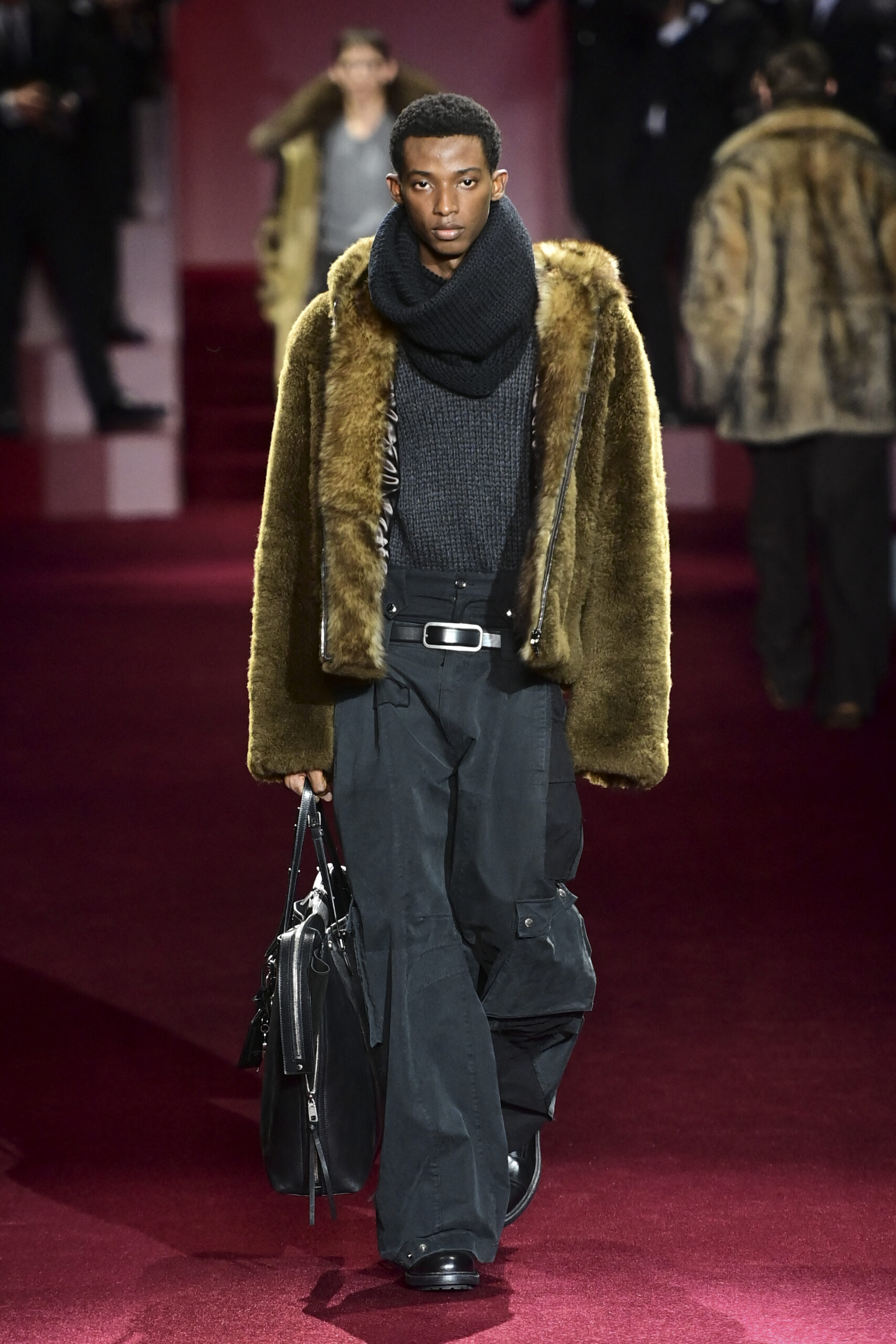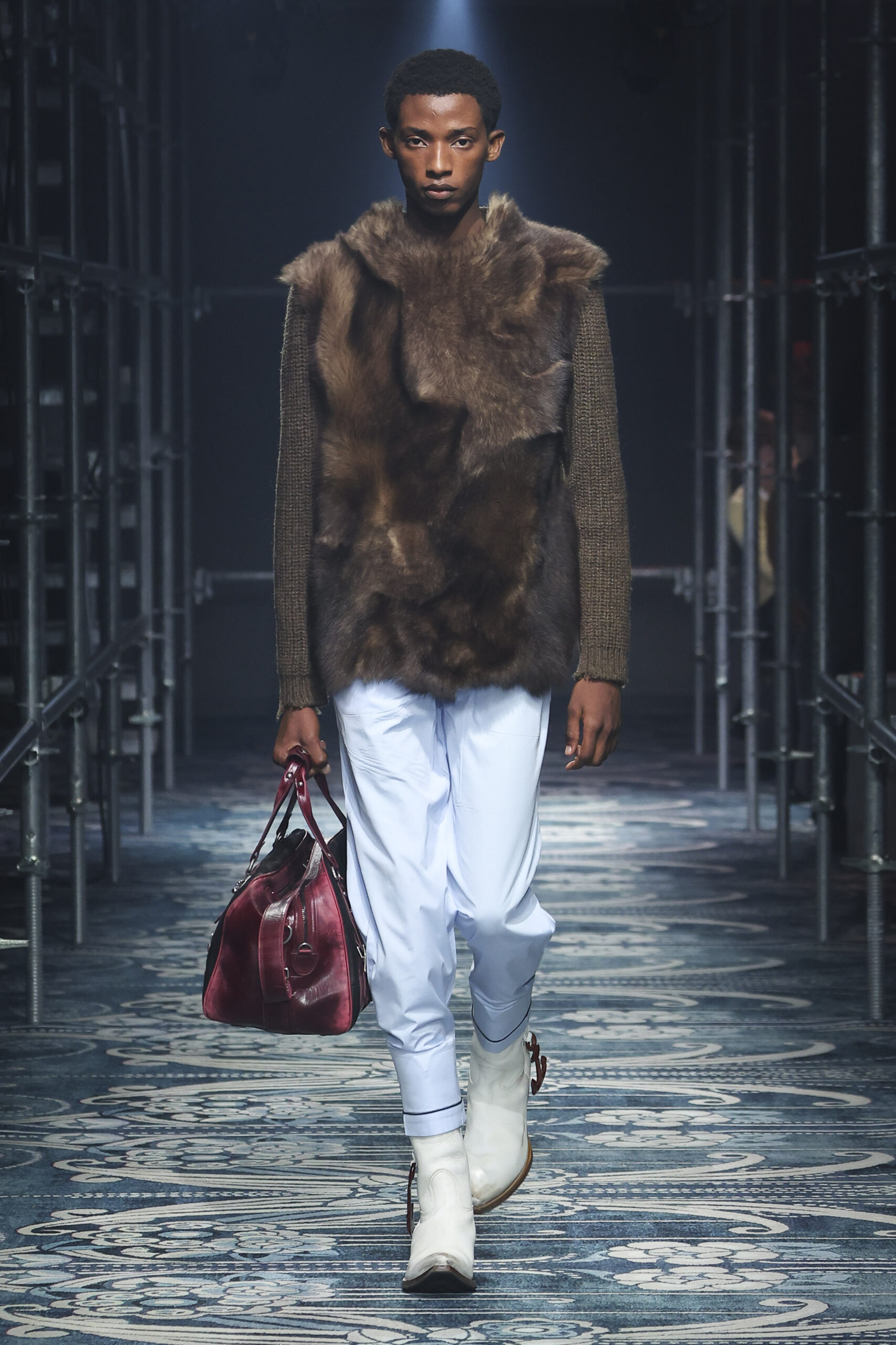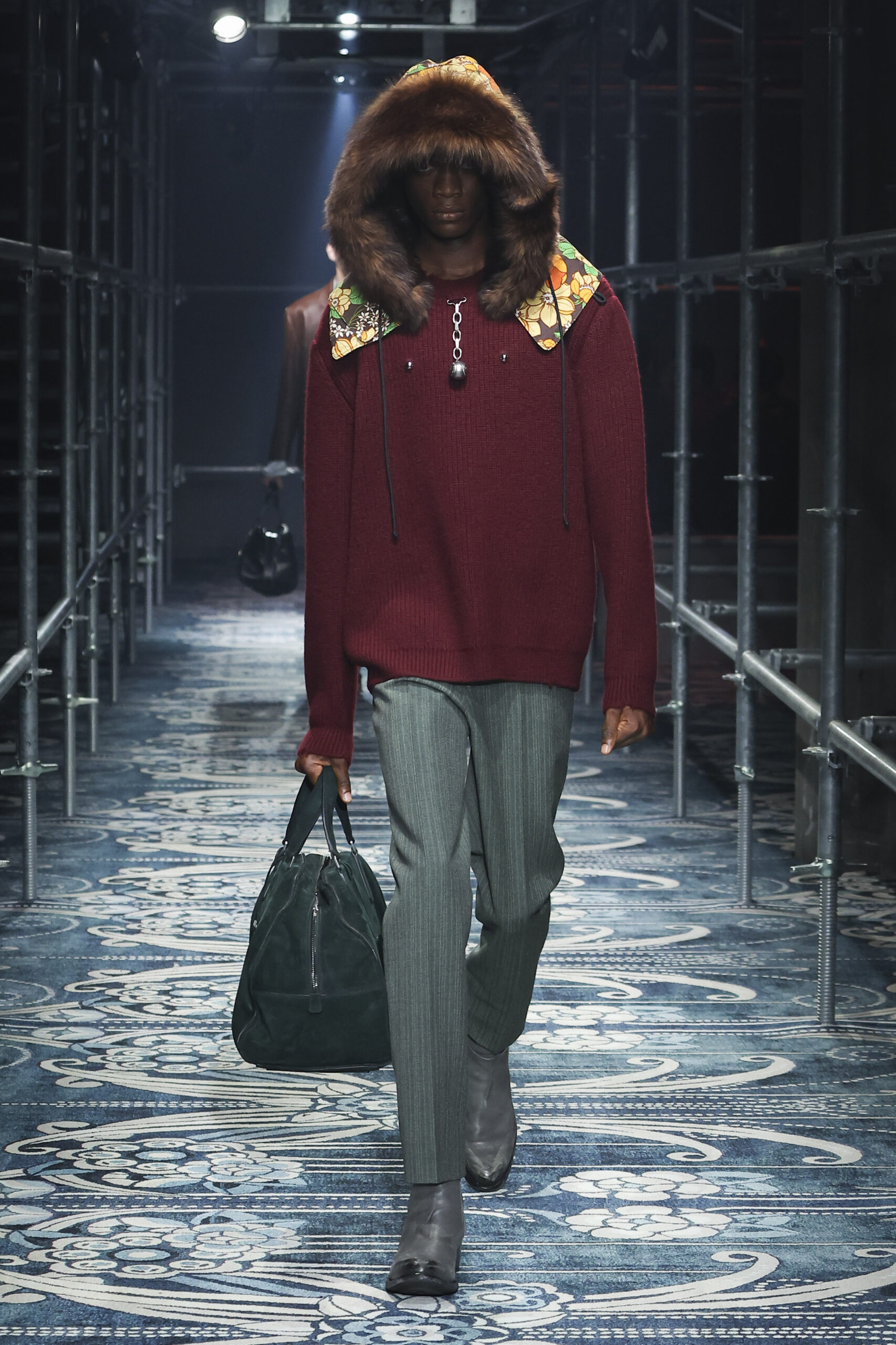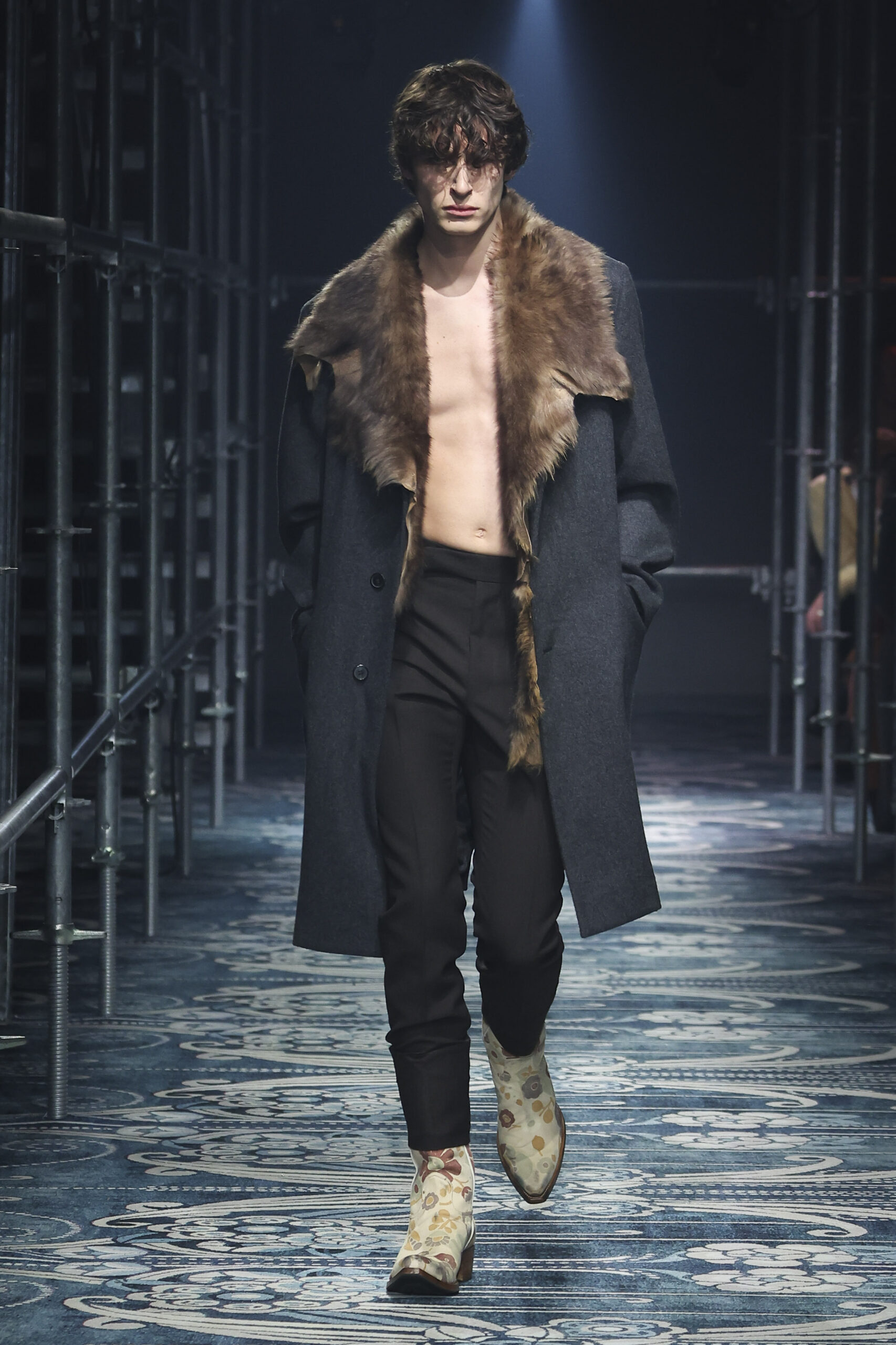News
Fashion is obsessed with the now. From runway recaps to seasonal drops and social feeds, the industry sustains on a constant churn of what’s next, who’s in, or what defines the moment. Whether you’re a buyer, a stylist, or simply sartorially minded, there’s always pressure not just to look current, but to be current. To be late is to be invisible.
We build moodboards in our heads, assembling pieces that feel relevant, that will keep us relevant. Trends emerge and submerge, subverting one another in a constant cycle. Coco Chanel and Gianni Versace warned that chasing trends can feel hollow and represent a lack of true style. Still, the chase continues, because staying on-trend is a form of cultural fluency. By embracing or opposing trends, we communicate belonging, identity, and often status.
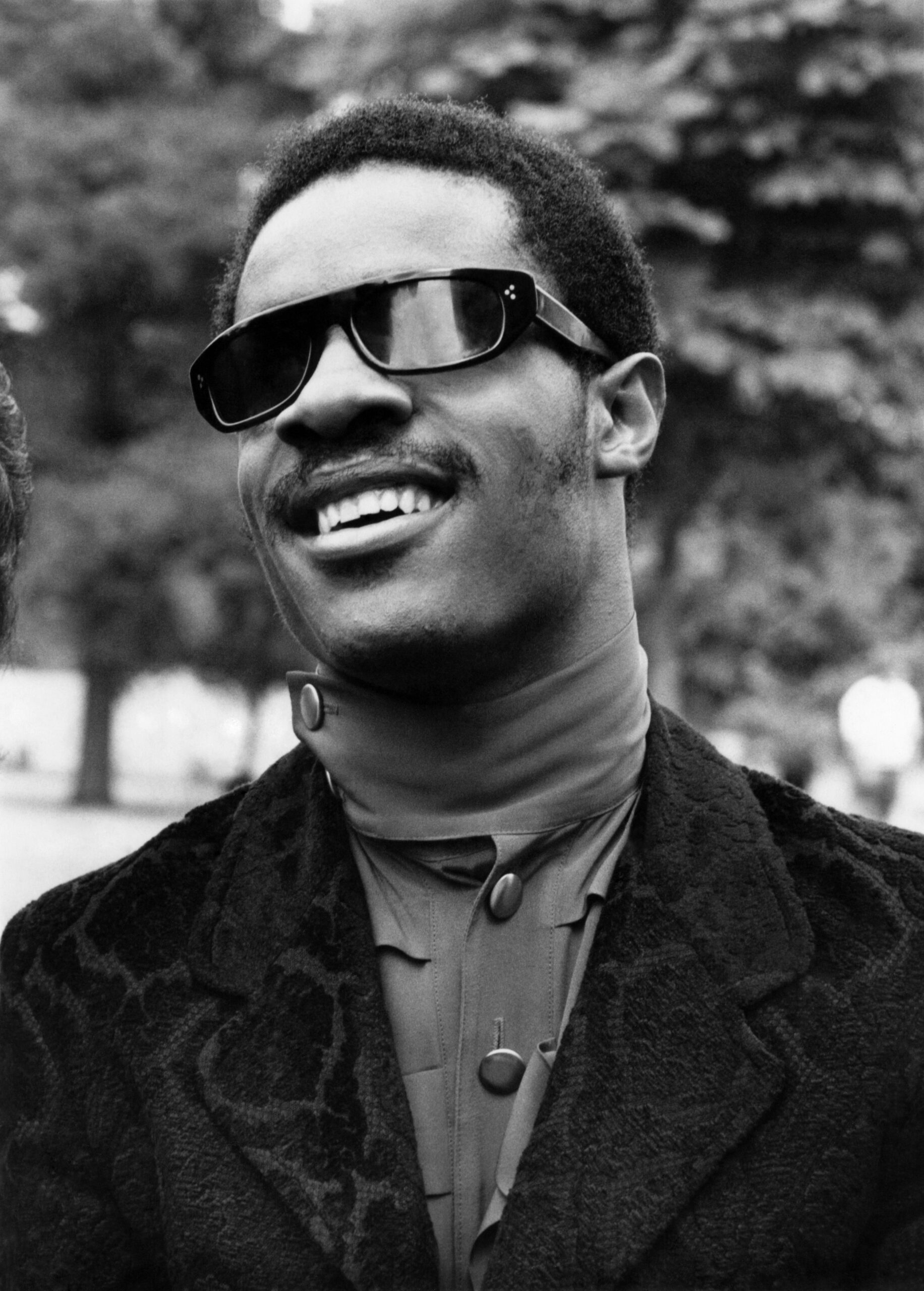
By definition, a trend develops over time, and what feels “new” is often refurbished. Rarely are these trends invented; rather, they’re remembered. Echoes, revivals, reinterpretation, a dive into a collective archive of humanity. Even when collections feel avant-garde, their roots often stretch deep into cultural and historical archives.
Take, for instance, the recent return of gender-fluid tailoring in menswear. Billowing sleeves, poet shirts, and extravagant layering. It might look fresh, but it’s steeped in history. The lineage can be traced back to the Incroyables of post-Revolutionary France. Men who, emerging from the trauma of the Reign of Terror, dressed in flamboyant defiance, tight trousers, exaggerated lapels, towering cravats, and even green-tinted glasses. Their look was performance, parody, and protest. The British Regency dandy (think Beau Brummell) adopted, expanded and defined the idea further, introducing a codified version of rebellion through style, culminating in the creation of the 18th-century dandy. But even these archetypes were no true founders; rather, they were an iteration influenced by Greek and Roman era clothing. Something “new” from many things borrowed.
When the world feels unstable, as it does now, fashion responds by dramatising, exaggerating, or softening. Dressing becomes emotional, a form of commentary; the sword and shield, an invisibility cloak, an anthropological timestamp.
This isn’t a shopping guide, and it won’t tell you what coat to buy this fall. Instead, it’s an excavation. A way of peeling back the trends to give a brief glimpse into what’s beneath the stories. A phantom thread connecting the now to the then. Not with the intention to diminish the current moment but to deepen it.
So what is a trend, really? It’s not just a look. It’s a signal. A shared emotional response to the world around us. And today, those signals are faster and more democratised than ever. Trends no longer trickle from the top down. They ripple out. They’re shaped in real time across runways, subcultures, and most forcefully from our screens.
In the pages ahead, we unpack six menswear trends for Fall/Winter 2025. Each one has a history. Each one speaks to where we are and where we’ve been. Tracing the thread from past to present.
The Fur & the Feral:
A trend crossing genders, fur is full-on for Fall/Winter 2025, with Prada, Dolce & Gabbana, Acne, Sacai and many others tapping into its primal, dramatic pull, whether it’s real or faux. Each brand has interpreted it in its own way, from timelessly classical to boldly innovative and thoroughly modern. The history of this trend may be one of the most obvious. We could trace it all the way back to the cavemen. Fur as an essential, as utility, as survival, and it makes perfect sense today to anyone who’s ever been caught outside on a cold night. But fashion doesn’t settle for just making sense. It reinvents and reinterprets. From the moment men could hunt it, buy it, or steal it, fur wasn’t just utility but a symbol of power. Across civilisations, from Egyptian priests donning leopard skins as sacred markers of strength to Aztec warriors wearing jaguar pelts as badges of ferocity, fur carried the abstract qualities of war, divinity, and dominance.
In medieval Europe, fur became a literal class code. Sumptuary laws dictated who could wear it. Ermine and sable? Reserved for royalty. Fox and rabbit? For everyone else. It was control woven into fabric, a reminder of role and repression. The Romanovs weaponised fur as geopolitical theatre. Their sable-trimmed crowns and mink-lined regalia defined imperial identity.
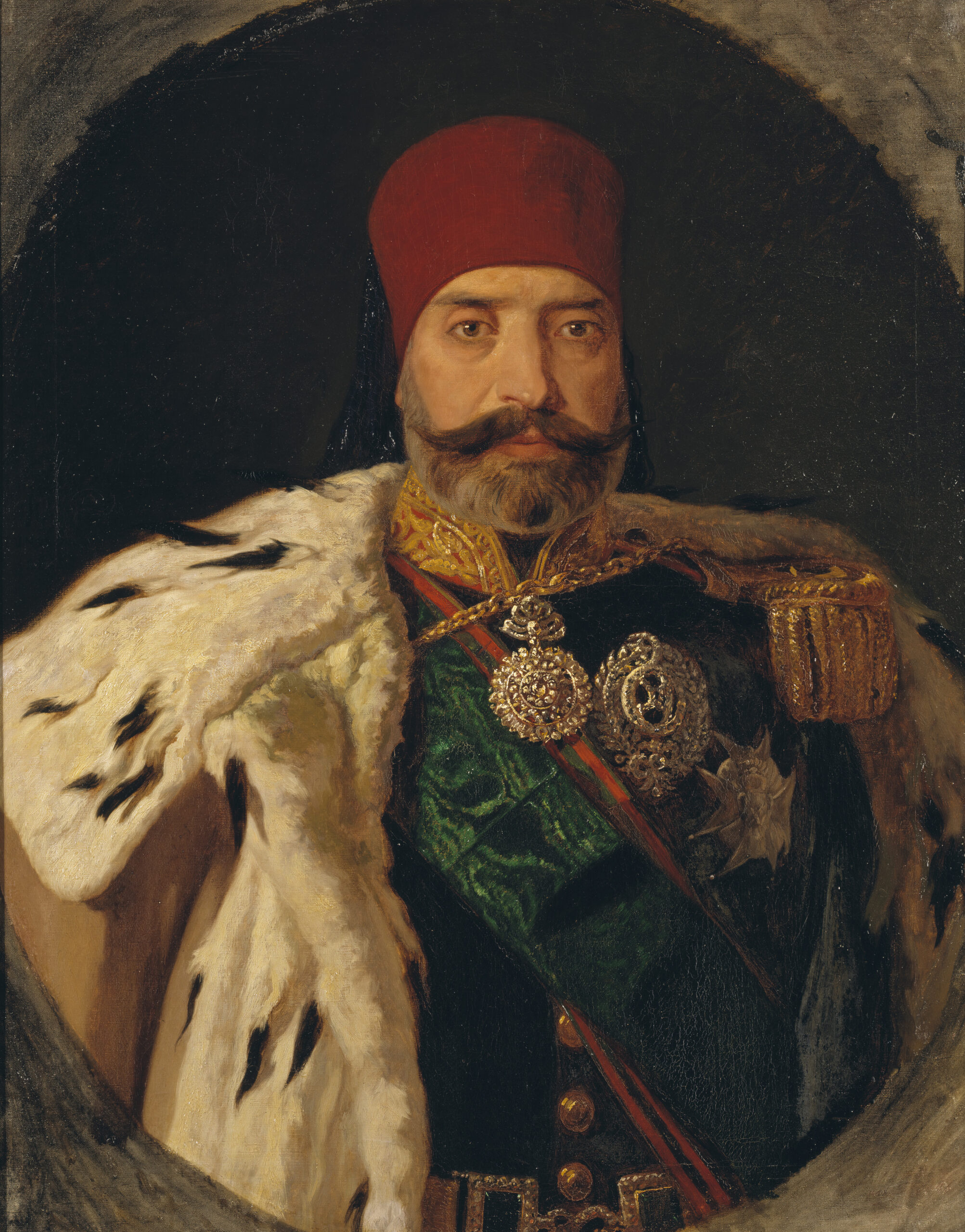
Public Domain
In the 19th and early 20th centuries, fur lined the coats of European aristocrats. Beaver top hats, mink-lined opera cloaks, and fox stoles spoke of restrained indulgence, imbuing a sense of wealth and worldliness. Fur was still about dominance, but it was understated, refined, class-bound, and exclusive.
Then came a cultural flip. Two World Wars had reshaped the elite, the culture, the fashion scene, and the consumption of fur, but not its symbolic currency. By the 1960s and 1970s, fur moved into new territory: black style, showmanship, rebellion. Harlem jazzmen, funk artists, and later hip-hop icons draped themselves in long coats, turning fur into a statement of success and defiance. Icons like Marvin Gaye and Notorious B.I.G. reclaimed furs historical gravitas as an emblem of money and mobility. Fur’s codes, once reserved for tsars, now belonged to everyone. A symbol, no longer of repression, but of a reclamation.
The 2000s backlash saw ethics prevail over aesthetics, and designers distanced themselves from real fur. But fashion loves a resurrection. Faux fur emerged as a solution, and today, an uneasy mix of real and faux fur signals drama, protection, and raw animal instinct. FW25 designers push the trend with oversized, exaggerated, and asymmetrical silhouettes. Wilder, queerer, and more emotionally charged. Wearing fur now reveals a hunger, a growl, the animalistic beneath the surface.
Like every great trend, fur doesn’t just cover the body; it reveals something deeper. Steeped in history and spanning continents, fur’s pull today is as potent as it was a thousand years ago.
70s REVIVAL: Disco with Depth
Fall/Winter 2025 sees a full-bodied return to the 1970s not as costume, but as character. This revival is less about nostalgia and more about reinterpretation. Flared trousers, wide lapels, crushed velvets, and earth-toned palettes are everywhere, but they’re polished, elevated, and contemporary. Designers are channelling the decade’s sense of rebellion, layering history with modern tailoring. Amiri brings the drama with embroidered silks and velvet blazers, while Willy Chavarria fuses 70s aesthetics with social consciousness through modern zoot suits and wide-legged trousers. Gabriela Hearst offers a cleaner, more grounded take, emphasising tactile materials and conscious design, while Todd Snyder plays up tailoring and retro palettes with a sharp urban lens.
The 1970s were a time of revolution in culture, politics, and personal expression. Fashion reflected that. Men moved away from conservative grey flannel suits, embracing longer hair, unbuttoned shirts, and tactile fabrics like suede and velvet. The era’s signature silhouettes were both relaxed and flamboyant. But what we prescribe as “70s style” is itself an amalgamation of the threads from the histories of multiple cultures.
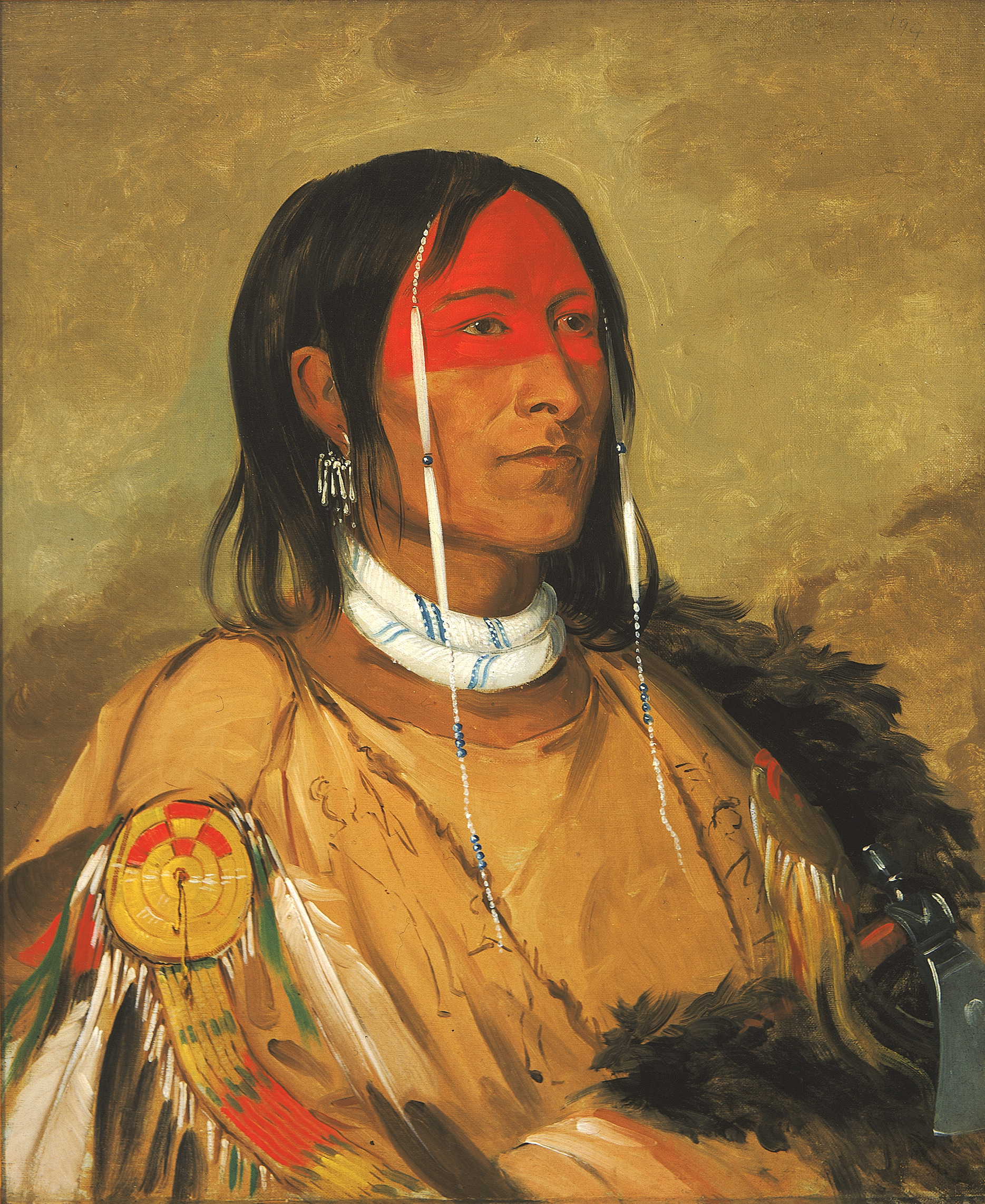
Public Domain
The decade’s bohemian roots are evident in the revival of peasant blouses, embroidery, tassels, and ethnic prints, drawing directly from traditional folk costumes across Eastern Europe, the Middle East, and Native American cultures. This embrace of folk and ancient motifs added a handcrafted, artisanal texture that contrasted with the emerging modernity of the time.
Simultaneously, Eastern and non-Western cultures deeply shaped the palette and silhouettes of the ’70s. Paisley, psychedelic swirls, and geometry popular in 70s textiles link back to Art Nouveau and Victorian design, while also echoing ancient textile traditions from Persian carpets to African wax prints. Indian textiles and paisleys became ubiquitous, propelled by cultural exchange sparked by figures like the Beatles. Moroccan, Turkish, and Japanese influences brought kimono-inspired shapes and layered styling, while Native American elements like fringes and moccasins entered mainstream fashion. Earth tones like burnt orange and mustard yellow, rooted in both retro aesthetics and natural dyes, further emphasised this global cultural tapestry.
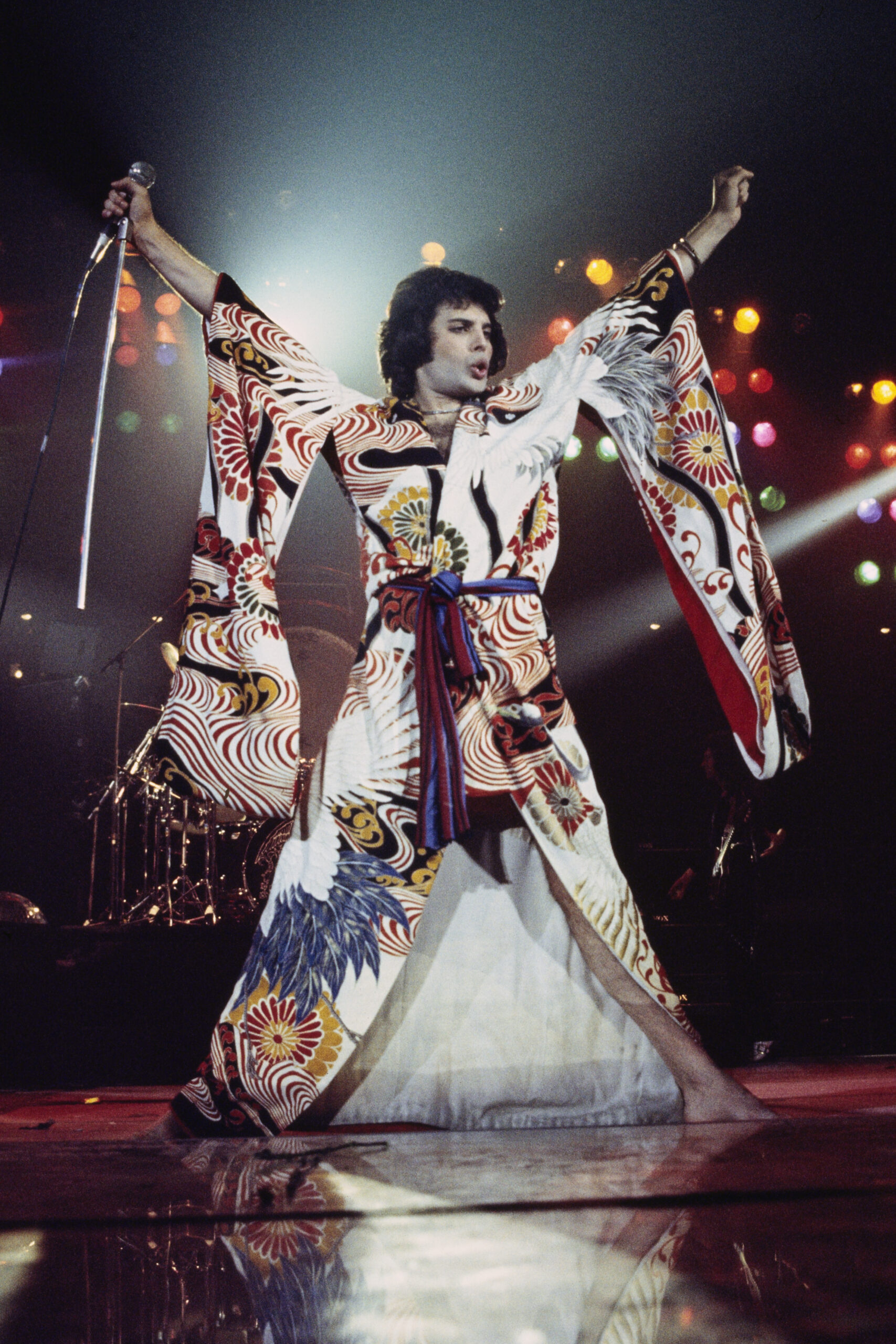
Michael Ochs Archives via Getty Images
One of the most recognisable elements from the 70s is the platform boot, synonymous with the glamour of the era. Its origins, however, can be traced back to Ancient Greece, where raised shoes helped actors appear taller on stage, and to traditional elevated sandals like the Japanese geta or Spanish chopines, initially designed to protect feet from mud, have developed into a status symbol.
Etro’s printed denim, Martine Rose’s flares, and Gucci’s retooled silhouettes all speak to this ongoing conversation, one that acknowledges fashion’s cycles as more than trend, but as evolution.
ROMANTICISM: Draped in Feeling
Soft folds, flowing tailoring, and garments poised on the edge of coming undone define the romantic thread running through Fall/Winter 2025 menswear and into next year’s spring collections. There’s a vulnerability in the silhouettes, a tension between fragility and strength. This season’s romanticism is shaped by gesture and emotion, marked by sheer fabrics, belted drapery, and fluid construction. Designers like Valentino and Dior lean into this with soft lace, elegant wraps, and fabrics that cling and fall with intention. Rick Owens reimagines masculine armour through cloaked shoulders and cinched waists, balancing intimacy and protection. Lanvin, Emporio Armani, Anne Demuelmeester, and Denzil Patrick all contribute to this drama, reinterpreting historical forms through a lens of contemporary values.
The history of romantic dressing is deep and richly cross-cultural. In ancient Greece and Rome, clothing was shaped less by cut and more by arrangement. Draped robes embodied intellect, order, and status. Persian and Middle Eastern garments emphasised grace and hierarchy through fluid layers and beautiful details, while Asian cultures, particularly in China and India, developed intricate systems of layering and securing to signal social and spiritual alignment. What we consider romantic was in fact their standard, or at least the standard for the upper class. In 18th-century Europe, the flamboyant Macaroni subculture rejected masculine restraint with frock coats and elaborate laces. Later, Victorian style emerged, blending historical influences like Renaissance and Rococo with the era’s strict social codes, emphasising modesty and status. Fueled by industrial advances and global cultural exchange, it became an ornate, structured aesthetic that balanced tradition with new technologies. Artistic inspiration gave way to more relaxed restrictions as things like Ballets Russes of the early 20th century inspired designers like Paul Poiret to break away from structure entirely, adopting Eastern silhouettes and breathing theatricality into Western fashion.
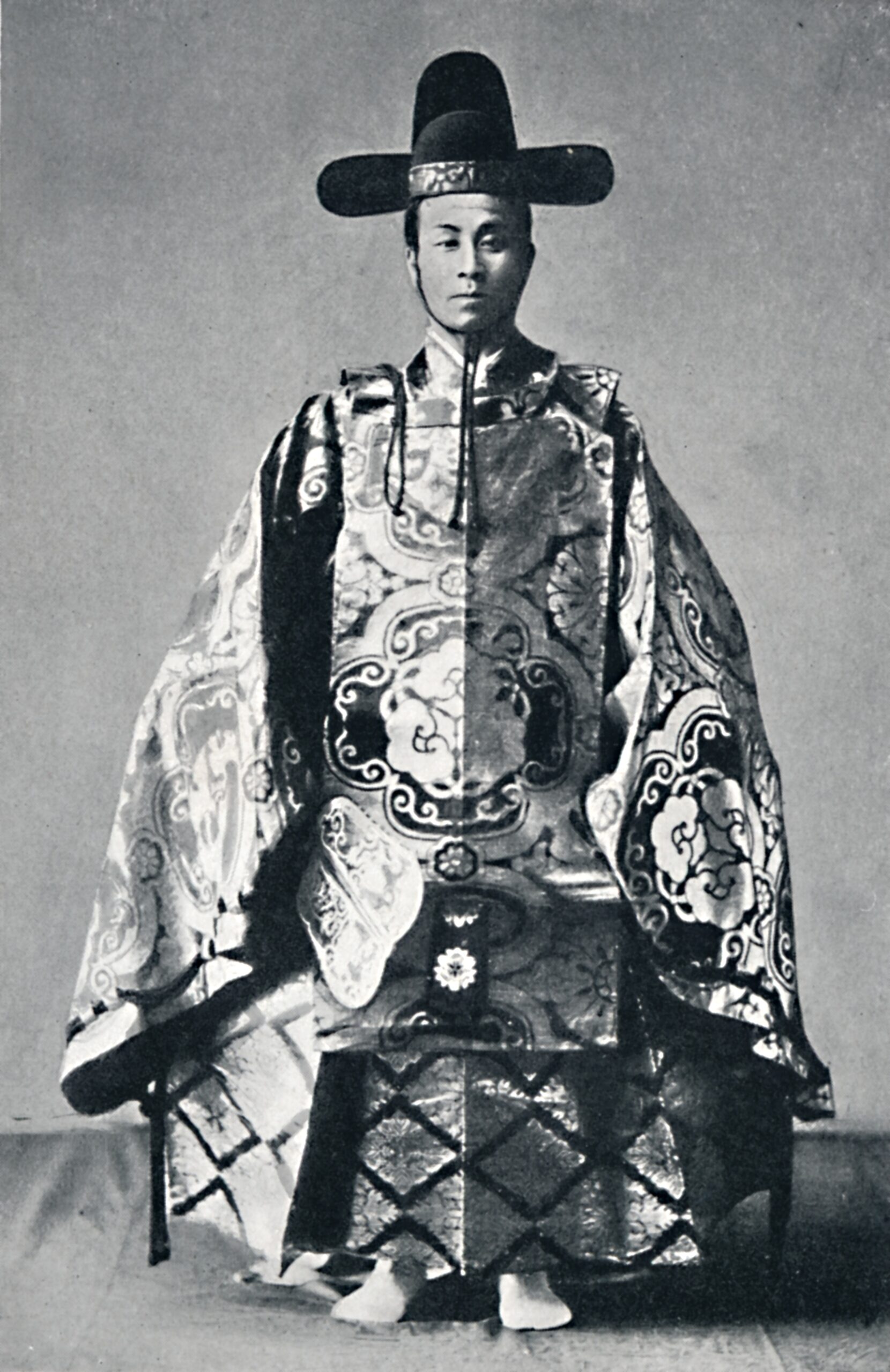
Print Collector / Contributor Hulton Archive via Getty Images
By the 1980s, designers such as Yohji Yamamoto and Rei Kawakubo introduced asymmetry, oversized shapes, and intellectual volume; a different kind of romanticism, redefined through a philosophical lens. FW25 carries this legacy forward. Valentino’s lace and sheer wraps conceal yet reveal with calculated softness. Ann Demeulemeester and Simone Rocha tap into gothic romance with ribbons and frayed edges. Egonlab’s asymmetrical tunics fall from one shoulder, suggesting both elegance and disobedience. Romanticism this season is harnessing softness as power.
GORPCORE: Survival Chic
2025 confirms that the great outdoors remains fashion’s favourite frontier. Gorpcore, named after the hiker snack “Good Ol’ Raisins and Peanuts,” has evolved from a functional look into the luxury lexicon. From Sacai’s wilderness-toned hybrids to Blumarble’s hooded silhouettes, this season’s outerwear draws directly from alpine, expedition, and trail aesthetics. Some designers adopt the style through luxury fabrics and nods to the aesthetic, while others build true techwear garments with all the zippers and advanced materials one would need to summit a peak.
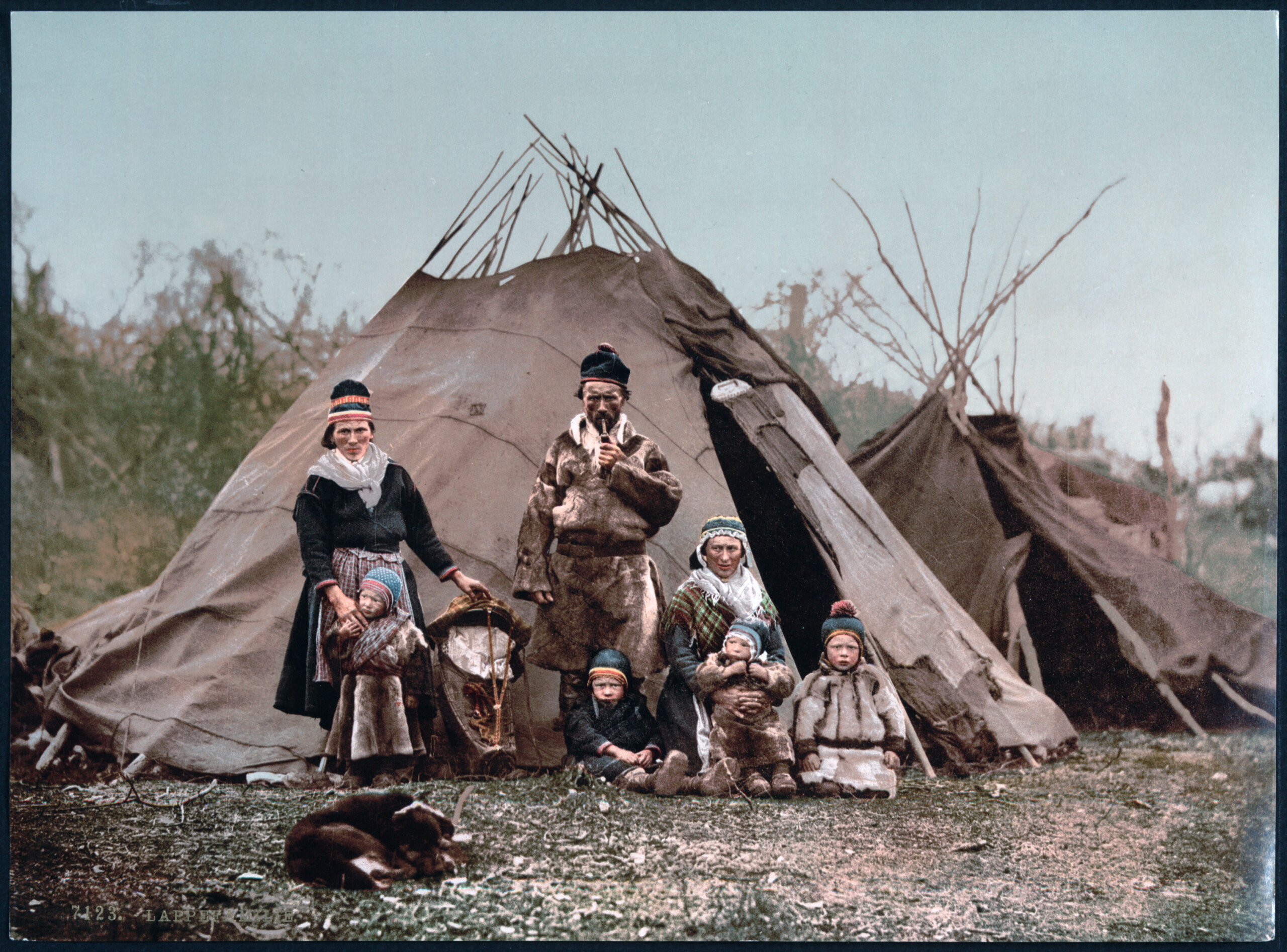
The history of Gorpcore runs deeper than GORE-TEX and trail runners. Clothing engineered for terrain and survival is as old as civilisation. Indigenous circumpolar communities crafted insulated seal-skin parkas, while Persian desert-dwellers wore cleverly layered and ventilated robes to manage extreme heat. Central Asian nomads and Nordic herders mastered modular dressing centuries before synthetic fabrics existed. In the 20th century, outdoor gear gained mass cultural appeal through brands like Eddie Bauer and The North Face, eventually trickling into skate, surf, and urban youth subcultures. Today, those foundations are reimagined as urban uniform and luxury statements.
Designers are exploring this tension between performance and polish in distinctive ways. White Mountaineering and Kiko Kostadinov blur the lines between real gear and avant-garde menswear. Reese Cooper injects a rugged abstraction of Americana, while KidSuper and Mordechai reinterpret the language of outdoor wear through street and artistic lenses. Auralee brings softness to tech with silk anoraks and minimalist construction. Meanwhile, Prada and MSGM reinterpret lumberjack aesthetics with heritage plaids, quilted wool, and high-end finishings. Whether you’re wearing Pertex Shield, GORE-TEX, or just a designer flannel with good marketing, Gorpcore’s power lies in its illusion: you can survive in the wild, and you can look good doing it.
WAIST: A Matter of the Middle
The male waist is no longer an afterthought. It’s a focal point. In Fall/Winter 2025, designers place increasing emphasis on sculpted or cinched midsections. Some accentuate it with sharply tailored silhouettes or belted overcoats, while others crop tops or exaggerate volume above and below to bring attention to the middle. It’s a reconsideration of proportion and power. Less about hiding the body and more about framing it. From Hed Mayner’s voluminous cuts to Jaquemus’s tight cinches and Dior’s architectural tailoring, the waist becomes a canvas for redefinition.
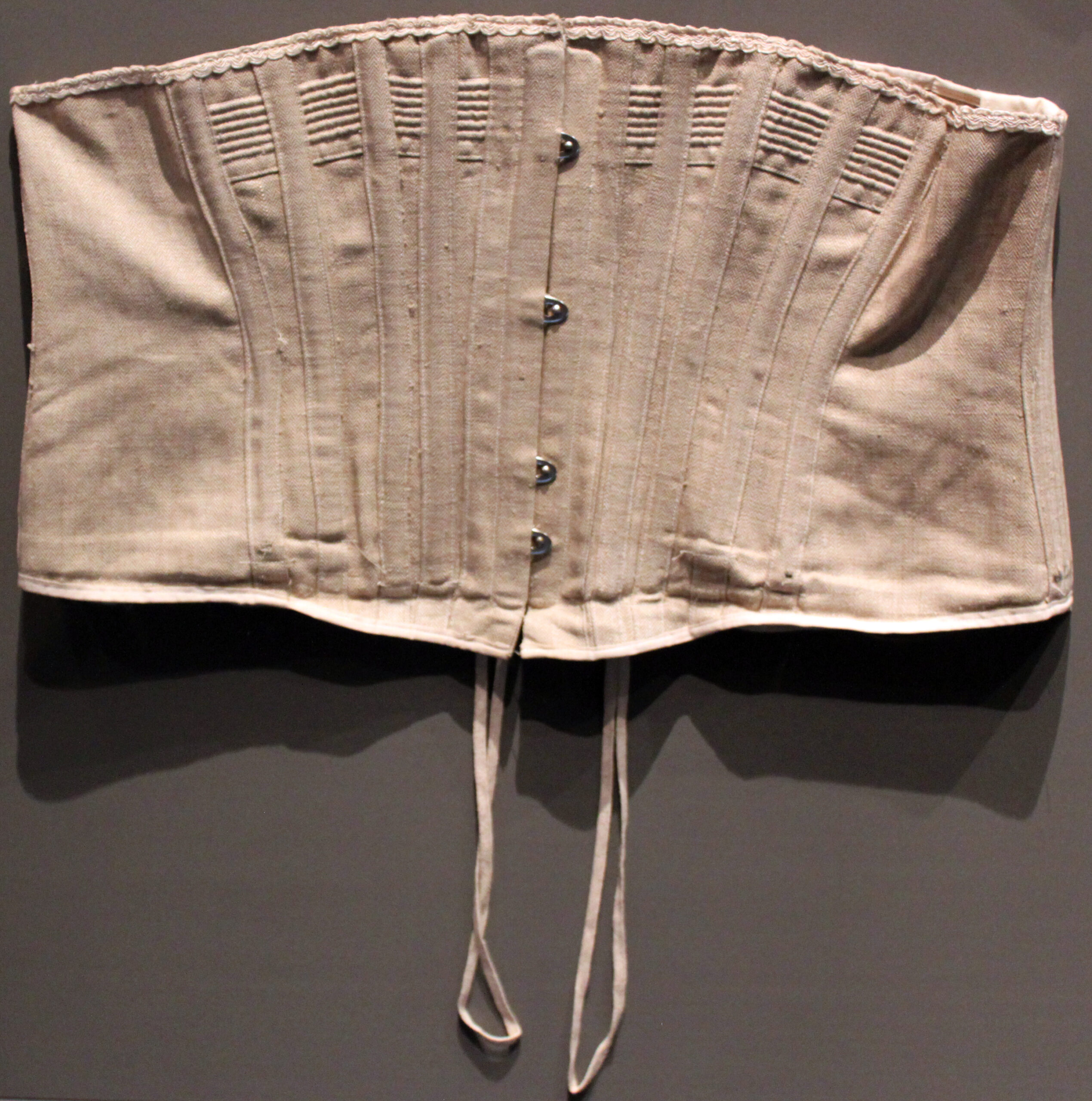
Historically, the waist has carried symbolic weight in menswear. In the 18th and 19th centuries, corsetry wasn’t just for women; military officers and upper-class men often wore structured undergarments to reinforce posture and project discipline. The sculpted waist conveyed strength, control, and societal rank. In the 1940s, the high-rise trousers emphasised the male midsection, giving the silhouette a refined, authoritative line. The baggy, slouchy rebellion of the 1990s was as much a rejection of that control as it was a comfort trend. Today, in an era of body awareness and evolving gender expression, the waist is being reclaimed, no longer hidden or ignored, but proudly revealed.
Designers this season are responding with bold interpretations. EgonLab emphasises the middle with belts and tailored tension. Hed Mayner plays with exaggerated volume to distort and dramatise the silhouette, while Pronounce experiments with bold cuts and wraps, tailoring each angle and length to emphasise the body’s structure. Whether through sculptural layering or visible cinching, this trend speaks to control and the evolving freedom to shape male identity on one’s own terms.
SHOULDERS: Frame of Power
Shoulders are making a strong statement for Fall/Winter 2025. No longer simply a byproduct of oversized silhouettes, they’ve become a deliberate focus. Whether padded, epauletted, dropped, or even bare, they are commanding attention. This resurgence draws on multiple decades of power dressing, pulling from both the sharp, exaggerated angles of the 1980s and the louche slouch of the 1970s. But unlike past eras where the rest of the outfit followed suit, FW25 frames the shoulders while letting the rest of the silhouette bend, fall, or flow, making them the true structural core of the look.
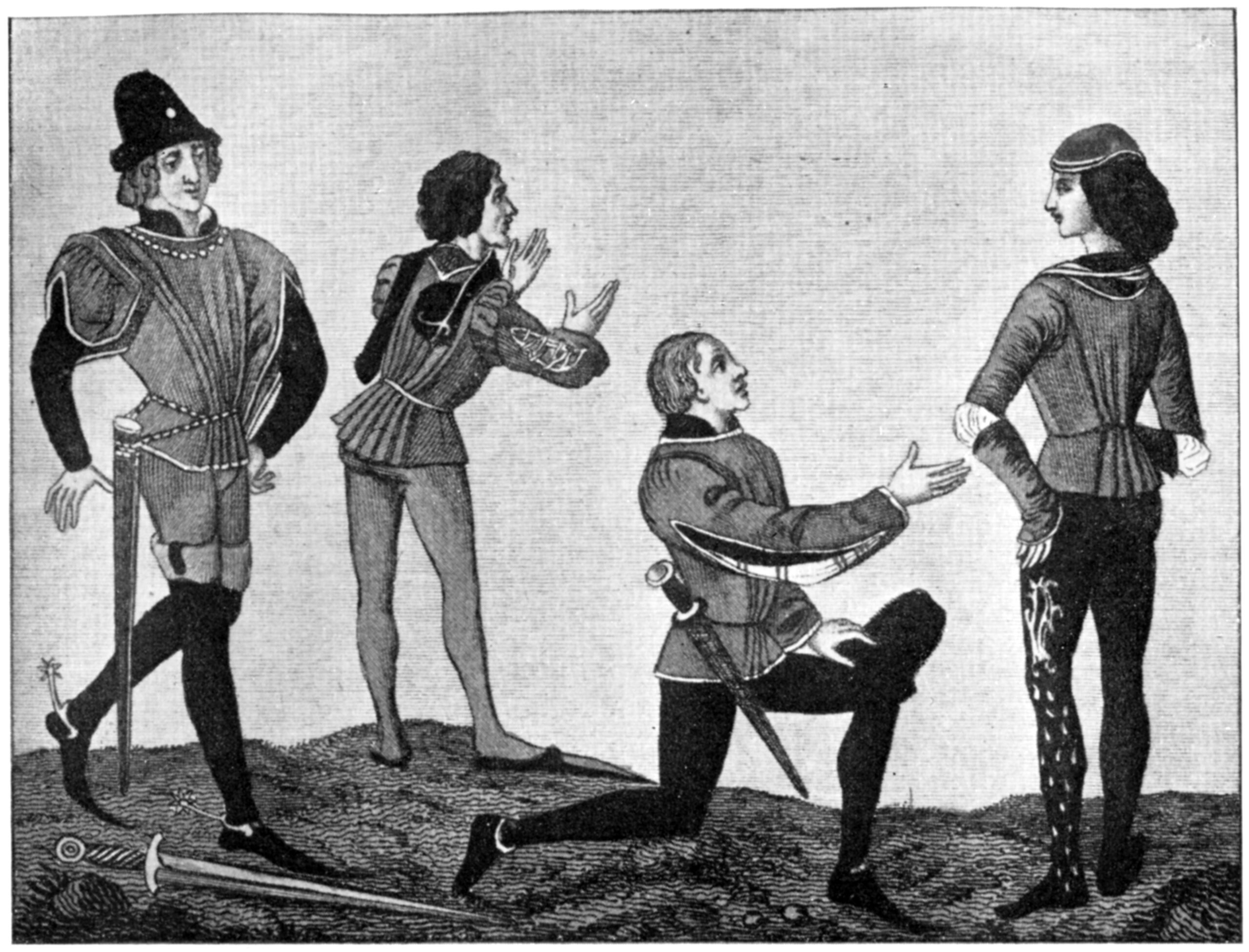
Historically, broad shoulders have symbolised readiness, dominance, and authority. From Renaissance doublets to Napoleonic military uniforms to the 1940s power suit, shoulders have helped define the cultural language of strength. Even in cartoons and superhero movies, shoulders convey physical and social power, reinforcing ideals of masculinity and leadership. In more recent years, the return of oversized tailoring brought back shoulder pads by default. But today, designers are leaning into their architectural potential with more intention, constructing outfits where the shoulder is the first and strongest statement.
Saint Laurent leads the charge with razor-sharp jackets and structured overcoats, where the shoulder dictates the silhouette. Rick Owens takes a more sculptural approach, building angular, cocooned forms that envelop or expose the shoulders in dramatic fashion. LGN Louis Gabriel Nouchi references military uniforms with structured seams, but tempers them with sensual, body-conscious draping. Elsewhere, GmbH, Ludovic de Saint Sernin and other directional brands experiment with shoulder reveals, half-slipping garments, off-kilter drapes, or asymmetrical cuts that flirt with both exposure and exaggeration. Whether structured or subverted, the shoulder in FW25 is more than a detail; it’s a declaration!
As we trace the thread of fashion, we see it as a reflection of both the past and the present moment. Styles don’t emerge in isolation; they respond to the cultural climate of their time, carrying echoes of history while capturing current realities. They are not entirely new; rather they are strands woven into an ongoing tapestry. To understand where fashion is headed, we must first understand how it mirrors what came before and what’s unfolding now.
Side Bar: The Accessories: Pearls, Broaches, Intaglios, boat shoes
It’s not just the ready-to-wear that reaches into the past. Accessories, too, are steeped in centuries of history. Take boat shoes, for example. Originally designed in the 1930s by Paul Sperry for American sailors and inspired by Native American moccasins, they became a mid-century preppy staple, and are now reinterpreted in luxury leather by brands like Jaquemus and Miu Miu.
Intaglio jewellery, carved gemstone seals, date back to Mesopotamia, and flourished in the Greek, Persian, and Roman Empires as personal insignias. These carved gems were the precursors to the signet ring, which served as both decorative jewellery and functional tools for sealing documents. English aristocrats revived the use of intaglios and signet rings in the Georgian and Victorian eras. Today, both signet rings and intaglios are experiencing a modern resurgence, embraced for their timeless blend of heritage, craftsmanship, and personal expression.
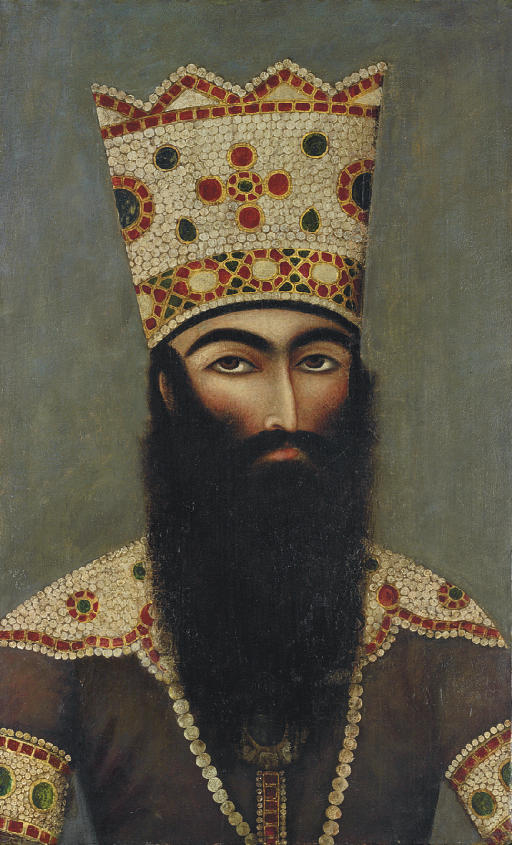
Pearls, currently seen everywhere from Louis Vuitton to Simone Rocha, have a rich legacy as masculine ornaments. Persian emperors, Mughal princes, and Middle Eastern sultans wore them as divine status symbols, while European kings like Henry VIII and Francis I sported pearl-embroidered tunics. Charles I even wore one very famous earring in official portraits.
Brooches trace their origins to Iron Age Celtic utility, later evolving into dazzling courtly flourishes in Byzantine, Ottoman, and Victorian fashion. These accessories are relics made relevant once again, now boldly oversized or subversively styled and worn across red carpets and upscale events. From jewellers like Boucheron and Cartier to the likes of Dries, McQueen, and Dior, there are more options than ever for men to shop for brooches.
